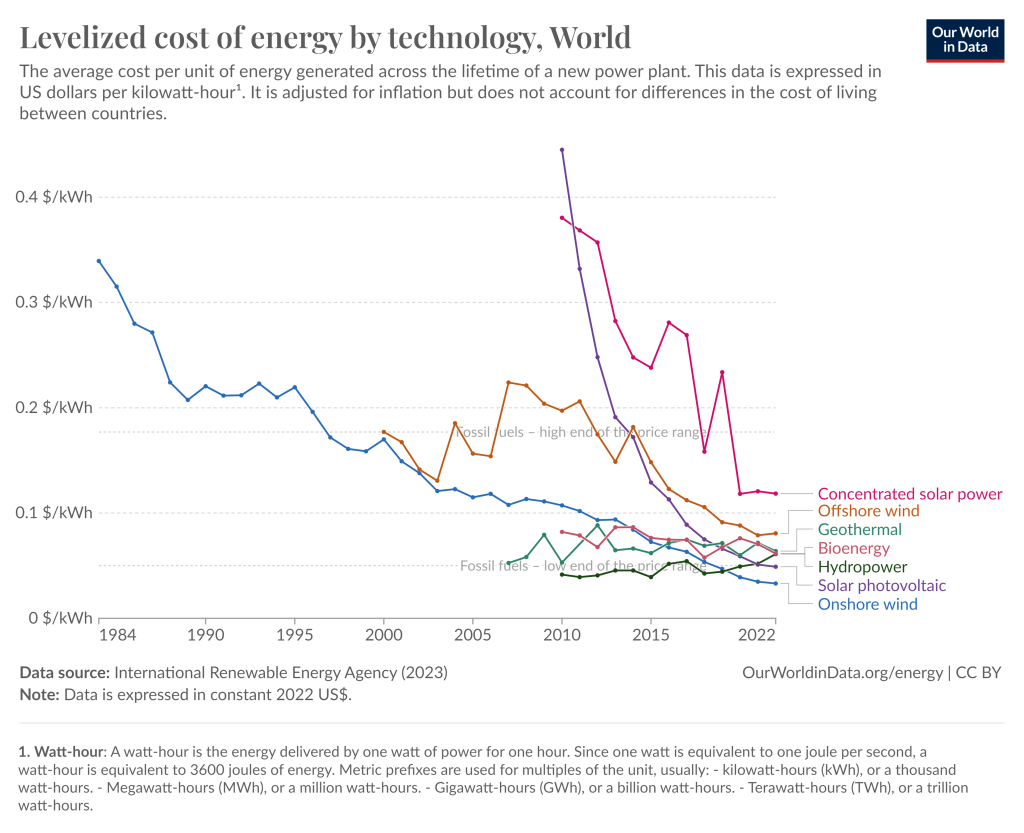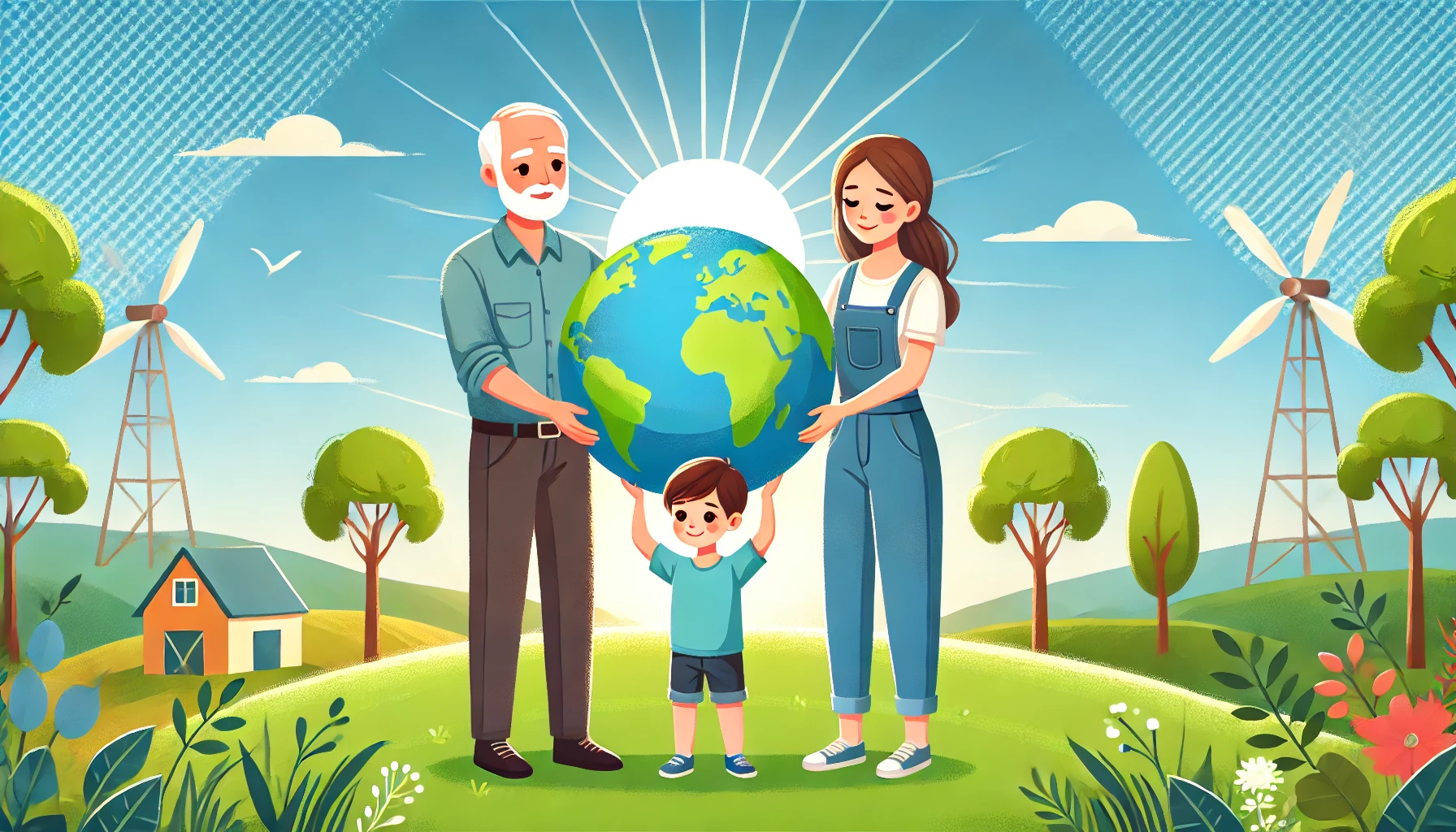By Kristi Sturtz, ALM, AICP
Read Climate Change Series – Part 2
Mitigating the Climate Crisis
The climate crisis is a challenge that we as an overall society need to address. From cleaner energy to innovative technologies, the solutions are in front of us. What has been missing is the political will, collective action, and long-term planning to fully embrace these changes. As climate change accelerates, it is imperative that we act on all fronts—global, national, business, and personal—to mitigate the crisis and power our economy with cleaner, sustainable energy sources.
Global Actions: Leading the Way with International Collaboration
The climate crisis does not respect national borders, making global cooperation essential. The three biggest carbon emitters—China, the United States, and India1 — play an outsized role in this effort. It is encouraging to note that as the need for an energy transition is increasing, the market is responding, driven by the economic realities of cleaner energy.
Powering the Global Economy with Renewables
Renewables are no longer just environmentally preferable—they are becoming economically superior. Solar and wind power, along with advances in battery storage, have dropped dramatically in cost. Renewable energy has become cheaper than coal and gas in many parts of the world. This shift is being forced by market economics, as countries and industries recognize that investing in fossil fuels is building for the past, while clean energy is the future.
Figure 12

Global Leadership and Long-Term Planning
Countries representing an overwhelming percentage of the global gross domestic product (GDP) have made bold pledges to reduce emissions and accelerate the transition to clean energy. While China is still the world’s largest builder of coal plants3, it is also outspending the U.S. four-to-one in renewable energy and associated new technologies.4 These investments position China to lead in the next global energy revolution.
From carbon capture technologies to fusion energy and modular nuclear reactors, global investment in negative emissions and next-generation power sources is critical. Fusion, the great hope of clean energy, is projected to be on the grid by the 2040s5, and green hydrogen6 is emerging as a promising fuel for heavy industries. Protecting nature—rainforests, peatlands, and kelp forests—also plays a vital role in storing carbon and stabilizing the climate.
National Actions: Policy and Progress in the U.S. and Beyond
National governments have the responsibility to implement policies that drive the clean energy transition while ensuring that economies and jobs thrive. The U.S., as the second-largest greenhouse gas emitter, plays a crucial role, but we can learn from other nations, such as those in Northern Europe, who are moving faster and more effectively.
The Energy Transition in the U.S.
In the U.S., Texas stands out as a leader in renewable energy.7 Thanks to deregulation, Texas has one of the largest wind and solar capacities in the country. While volatility is expected as part of the energy transition, many believe that over the long-term renewable energy will save money and reduce the financial burden on consumers while also creating jobs. Jobs are being lost within the fossil fuel sector as we build a new energy future, and those communities need help with transitioning their local workforces and economies to other opportunities. However, clean technology will create millions of jobs across sectors like wind, solar, battery storage, and electric vehicles. An analysis by the World Resources Institute of different U.S. emission reduction investment scenarios determined that an estimated 4.2 – 6.5 million new jobs are estimated to be created as a result by 2035. These included jobs in the Electricity, Transportation, Building, Fuel and Other Misc. categories. This analysis also did not account for the domestic manufacturing of clean energy technologies and associated supply chains.8
The Role of Natural Gas
While renewable energy is the future, natural gas has been argued to be a bridge fuel during this transition. The argument is that gas plants offer reliability as we upgrade our grid for greater renewable integration and storage capacity. But this is a temporary solution and has become more controversial over recent years. The long-term goal must remain reducing our dependence on fossil fuels.
Education and Investment
Education and investment in new clean energy technologies are vital for the U.S. to remain competitive. China has already recognized this and is out investing the U.S. in clean energy and technology. We must make similar commitments to ensure that we are not left behind in the global energy race. Clean energy is not just about saving the planet—it is about securing the jobs and economies of the future.
Business and Industry Actions: Leading the Charge Toward Sustainability
Businesses are not waiting for governments to act. Climate change is already impacting the bottom line, and stakeholders are demanding more accountability. The private sector is leading the way in reducing emissions and adopting innovative technologies.
Corporate Responsibility and Clean Energy
Many companies have set ambitious carbon-neutral or net-zero targets, recognizing that sustainability is essential to long-term success. Renewable energy is cheaper than fossil fuels in many cases, and corporations are investing in wind, solar, and energy storage technologies to power their operations sustainably.
Grid Upgrades and Electrifying Our Lives
Upgrading the energy grid to handle more renewable energy is crucial. New technologies, such as virtual batteries, allow homeowners and electric vehicle owners to participate in the grid. With smart grid technologies, your electric car or home battery could store excess renewable energy and release it back into the grid when demand is high, creating a more flexible and reliable energy system for everyone.
Carbon Capture and Negative Emissions
Carbon capture technology offers another path to mitigating climate change by capturing emissions from industrial processes and storing them underground or converting them into reusable fuel. Businesses are investing in these technologies, and while they are still in the early stages, they represent an essential tool for reducing emissions in industries that are difficult to decarbonize, such as cement and steel production.
Personal Actions: Making a Difference Every Day
While systemic changes are crucial, individuals also play a role in mitigating the climate crisis. By making thoughtful decisions in our daily lives, we can collectively drive demand for cleaner energy and more sustainable practices.
Electrify Your Home and Vehicle
Transitioning to electric vehicles (EVs) and powering your home with renewable energy are two of the most significant actions you can take. Many utilities now offer green energy options, allowing you to power your home with solar or wind without installing solar panels. Electric vehicles, meanwhile, are becoming more affordable and offer long-term savings on fuel and maintenance.
Support Clean Energy through Advocacy and Lifestyle Choices
Advocate for renewable energy policies in your community, support companies that prioritize sustainability, and make choices that reduce your carbon footprint. This includes reducing energy consumption, minimizing waste, and supporting local businesses that are committed to environmental responsibility.
Invest in the Future
Whether through your personal investments, voting habits, or purchasing decisions, you can help shape the future. Choose renewable energy options when available, support companies that are leading in clean technology, and push for political leaders who prioritize climate action.
Conclusion: The Path Forward
The solutions to the climate crisis are already here, and the market is responding with cleaner, cheaper, and more reliable energy options. While challenges remain—particularly in political will and global cooperation—there is hope. Countries, businesses, and individuals are stepping up to build a future powered by renewable energy and sustainable practices. The choice is clear: we can build for the future or continue clinging to the past. The time for action is now, and everyone has a role to play in this global effort to mitigate the climate crisis.
- World Resources Institute. (2023). https://www.wri.org/insights/interactive-chart-shows-changes-worlds-top-10-emitters ↩︎
- Our World in Data. (2023). International Renewable Energy Agency. https://ourworldindata.org/grapher/levelized-cost-of-energy ↩︎
- NPR. (2023). https://www.npr.org/2023/03/02/1160441919/china-is-building-six-times-more-new-coal-plants-than-other-countries-report-fin ↩︎
- Scientific American. (2023). https://www.scientificamerican.com/article/china-invests-546-billion-in-clean-energy-far-surpassing-the-u-s/ ↩︎
- U.S. Fusion Energy Strategy. (2024). https://www.energy.gov/sites/default/files/2024-06/fusion-energy-strategy-2024.pdf ↩︎
- Forbes. (2024). https://www.forbes.com/sites/amyfeldman/2024/04/01/current-climate-6-billion-to-turn-heavy-industry-green-biden-administration-battery-materials-green-hydrogen/ ↩︎
- Reuters. (2024). https://www.reuters.com/sustainability/top-us-states-renewable-power-generation-capacity-maguire-2024-07-25/ ↩︎
- World Resources Institute. https://www.wri.org/insights/us-jobs-clean-energy-growth ↩︎


